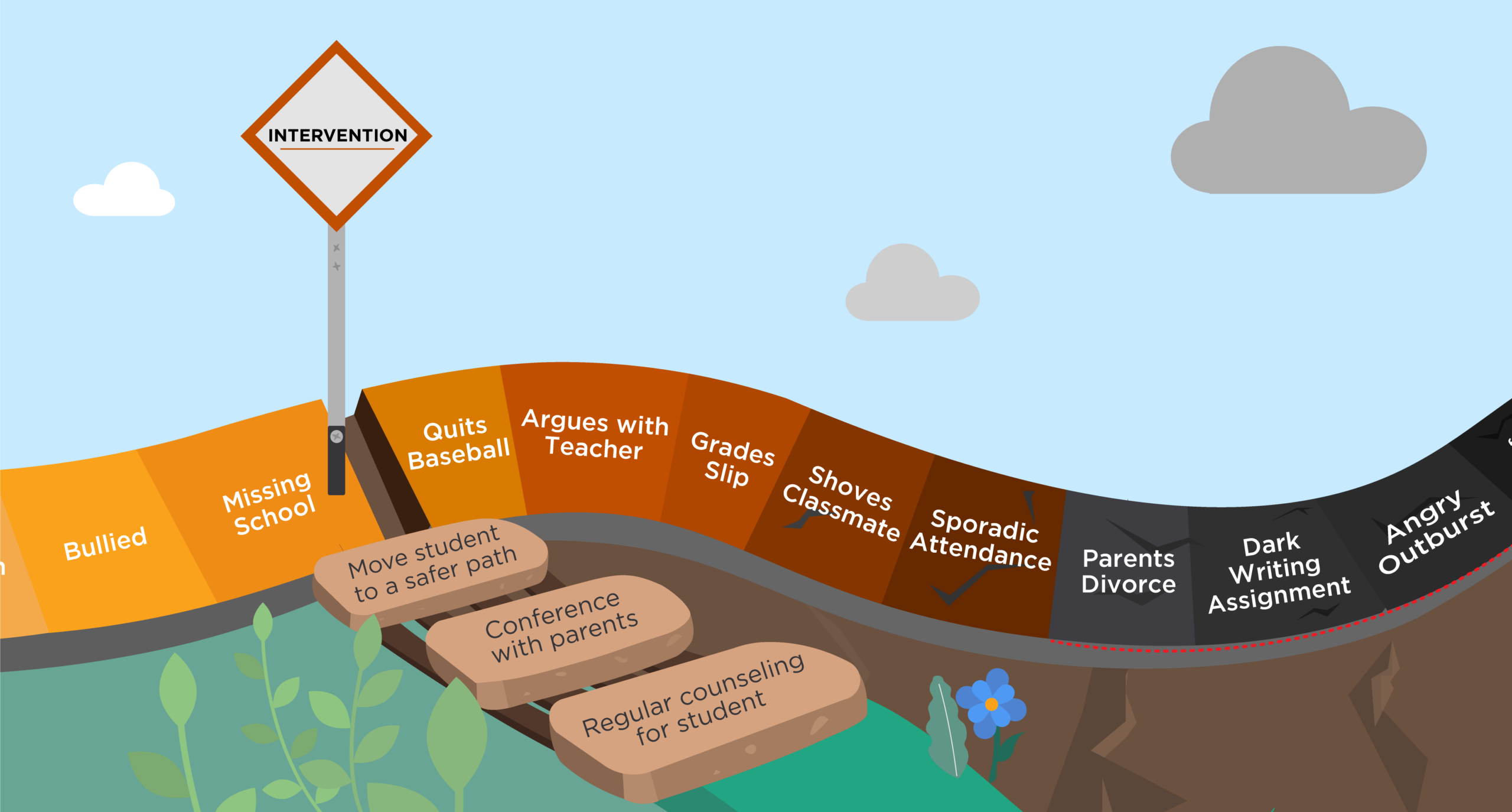Behavioral threat assessment is an objective, fact-finding process that is used to determine whether a student may pose a threat of violence to others and/or to themself – and then implementing strategies to reduce that risk. The primary objective is to prevent violence and ensure a safe learning environment by identifying, assessing, and addressing potential threats through early intervention and support.
One of the most effective approaches to threat assessment is to use a multidisciplinary team to do this work. These teams typically consist of school administrators, mental health professionals, school resource officers (SROs), and other relevant personnel. Each member brings unique expertise and perspectives, enabling a comprehensive assessment of the situation.
Key Components of a Multidisciplinary Team:
- School Administrators: Provide administrative support and facilitate coordination.
- Mental Health Professionals: Offer psychological insights and intervention strategies.
- School Resource Officers: Provide insights into criminality, physical safety, and security needs.
In the podcast on Understanding Threat Assessment and Early Intervention, Heilit Biehl, Director of Judicial Services at Jeffco Public Schools, emphasizes the importance of collaboration and empathy within these teams. Members should approach the process with a nonjudgmental mindset, seeking to understand the underlying reasons behind a student‘s behavior rather than resorting to stereotypes or assumptions.
Importance of Communication and Transparency in Threat Assessment
Effective communication and transparency are crucial components of threat assessment. Involving parents and guardians in the process can provide valuable insights and foster trust and collaboration. Schools should maintain open dialogue with families to create a supportive environment for students.
Ways to Enhance Communication:
- Informing Parents: Keep parents informed about threat assessment procedures and their role in the process.
- Open Dialogue: Encourage open communication between school staff, students, and parents.
- Building Trust: Foster relationships that strengthen collaboration and support.
Differentiating Between Intervention and Punitive Measures
Threat assessment is a separate process from disciplinary processes. It is focused primarily on support and prevention and encompasses a broader framework aimed at addressing the underlying factors contributing to concerning behaviors.
Key Differences:
- Intervention (one component of the behavioral threat assessment process): Focused on providing support and resources to address the root causes of behavior.
- Punitive Measures (a process that is separate from – and different than – behavioral threat assessment): Focused on disciplinary actions that may not address underlying issues.
Personalized safety plans can help students navigate challenges and succeed both academically and socially, reducing the risk of future threats.
Early Intervention Strategies to Prevent Escalation of Threats
So where does early intervention come into the behavioral threat assessment process? Early intervention is a critical component of effective threat assessment. By identifying and addressing potential threats at an early stage, schools can mitigate risks and prevent escalation to more severe incidents. Proactive strategies can include:
- Promoting Positive School Climates: Encourage a supportive and inclusive environment.
- Fostering Social-Emotional Skills: Equip students with the tools to manage emotions and build healthy relationships.
- Regular Training: Ensure staff are trained to recognize early warning signs and respond appropriately.
Continuous Evaluation and Improvement in Threat Assessment Processes
Continuous evaluation and improvement are vital to the success of threat assessment programs. Regularly reviewing and updating protocols ensures they remain effective and relevant to the school community’s evolving needs.
Steps for Continuous Improvement:
- Regular Audits: Conduct periodic reviews of threat assessment processes.
- Feedback Mechanisms: Gather input from staff, students, and parents to identify areas for improvement.
- Ongoing Training: Provide continuous professional development for team members.
Raptor’s Behavioral Threat Assessment (BTA) Methodology Training equips school administrators with the expertise needed to efficiently manage and complete behavioral threat assessments with integrity and confidence. Led by industry experts, this training aligns with the most current standards, ensuring your team stays at the forefront of BTA methodologies.
Key Benefits of Raptor’s BTA Training
- Expert-Led Training: Our seasoned professionals provide comprehensive training that meets the latest BTA standards. This ensures your team is well-versed in identifying and managing various threat classifications confidently.
- Practical Knowledge: Participants gain practical knowledge through mock threat assessments and case study walkthroughs. This hands-on approach prepares multidisciplinary teams to handle a wide range of incidents effectively.
- Unified Team Approach: Training brings each team member to the same level of practical knowledge, enabling them to contribute effectively to the program. This unified approach ensures consistency in handling threats across the board.
- Enhanced Student Support: Staff members are trained to identify different threat levels accurately, allowing them to provide appropriate interventions without overreacting or underreacting. This ensures students receive the help they need, improving overall student outcomes and school climate.
- Regulatory Alignment: BTA Team Training builds confidence in your team to align properly with policies, procedures, and regulations such as FERPA. This ensures compliance while focusing on what’s best for the student.
- Comprehensive Documentation: With StudentSafe, staff can record low-level concerns, interventions, and reactions, creating a complete student chronology. This comprehensive documentation helps in understanding patterns and making informed decisions.
Support Behavioral Threat Assessments and Early Intervention with StudentSafe
Technology plays an increasingly important role in enhancing threat assessment and early intervention efforts. Advanced software solutions can streamline the process, improve data management, and facilitate communication among team members.
Raptor StudentSafe™ stands out as the only K12 software that centralizes all student wellbeing policies within a secure environment, streamlining the entire threat management process from documentation to intervention. Incorporating Raptor StudentSafe into your school’s safety strategy means prioritizing the wellbeing of your students through precise, actionable data and coordinated intervention efforts.
Related Resources
Learn more about incorporating technology in your school’s student wellbeing management in Raptor’s newly-updated free Guide to K-12 Student Wellbeing.
Featured webinar








